Related Research Articles

Evin Prison is a prison located in the Evin neighborhood of Tehran, Iran. The prison has been the primary site for the housing of Iran's political prisoners since 1972, before and after the Iranian Revolution, in a purpose-built wing nicknamed "Evin University" due to the number of students and intellectuals housed there. Evin Prison has been accused of committing "serious human rights abuses" against its political dissidents and critics of the government.

The prison abolition movement is a network of groups and activists that seek to reduce or eliminate prisons and the prison system, and replace them with systems of rehabilitation and education that do not focus on punishment and government institutionalization. The prison abolitionist movement is distinct from conventional prison reform, which is intended to improve conditions inside prisons.

The rights of civilian and military prisoners are governed by both national and international law. International conventions include the International Covenant on Civil and Political Rights; the United Nations' Minimum Rules for the Treatment of Prisoners, the European Committee for the Prevention of Torture and Inhuman or Degrading Treatment or Punishment, and the Convention on the Rights of Persons with Disabilities.

Leoluca Bagarella is an Italian criminal and member of the Sicilian Mafia. He is from the town of Corleone. Following Salvatore Riina's arrest in early 1993, Bagarella became the head of the stragist strategy faction, opposing another faction commanded by the successor designate Bernardo Provenzano, creating a real rift in Cosa Nostra. Bagarella was captured in 1995, having been a fugitive for four years, and sentenced to life imprisonment for Mafia association and multiple murders.
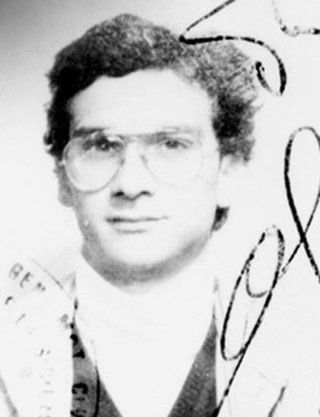
Matteo Messina Denaro, also known as Diabolik, was a Sicilian Mafia boss from Castelvetrano. He was considered to be one of the new leaders of the Sicilian mob after the arrests of Bernardo Provenzano on 11 April 2006 and Salvatore Lo Piccolo in November 2007. The son of a Mafia boss, Denaro became known nationally on 12 April 2001 when the magazine L'Espresso put him on the cover with the headline: Ecco il nuovo capo della Mafia.

Salvatore Lo Piccolo, also known as "the Baron", is a Sicilian mafioso and one of the most powerful bosses of Palermo, Sicily. Lo Piccolo rose through the ranks of the Palermo mafia throughout the 1980s and he became the capomandamento of the San Lorenzo district in 1993, replacing Salvatore Biondino, who was sent to prison. Lo Piccolo was a fugitive since 1983 and had been running his Mafia affairs in hiding. With the capture of Bernardo Provenzano on 11 April 2006, Lo Piccolo had been cementing his power and rise to the top of the Palermo Mafia until his own arrest on 5 November 2007. It is believed that his family spread across Europe due to rising tensions, settling in England, Portugal, and southern Spain.
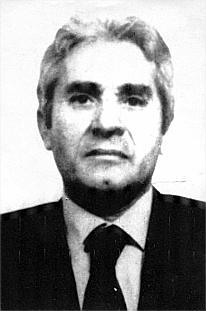
Antonino Geraci, better known as Nenè or il vecchio, was the historical boss of the Mafia in Partinico, in the Metropolitan City of Palermo. Geraci sat on the Sicilian Mafia Commission since the mid-1970s and belonged to the hard line faction allied with the Corleonesi of Totò Riina and Bernardo Provenzano. According to the pentito Tommaso Buscetta, Geraci took care of the fugitive Riina while he stayed in Partinico.
Italian anarchism as a movement began primarily from the influence of Mikhail Bakunin, Giuseppe Fanelli, and Errico Malatesta. Rooted in collectivist anarchism and social or socialist anarchism, it expanded to include illegalist individualist anarchism, mutualism, anarcho-syndicalism, and especially anarcho-communism. In fact, anarcho-communism first fully formed into its modern strain within the Italian section of the First International. Italian anarchism and Italian anarchists participated in the biennio rosso and survived Italian Fascism, with Italian anarchists significantly contributing to the Italian Resistance Movement. Platformism and insurrectionary anarchism were particularly common in Italian anarchism and continue to influence the movement today. The synthesist Italian Anarchist Federation appeared after the war, and autonomismo and operaismo especially influenced Italian anarchism in the second half of the 20th century.

Giuseppe Graviano is an Italian mafioso from the Brancaccio quarter in Palermo. He also was one the men of the death squad that murdered Salvatore Contorno's relatives. He is currently serving several life sentences. He and his three siblings became members of the Sicilian Mafia Commission for the Brancaccio-Ciaculli mandamento, substituting Giuseppe Lucchese who was in prison.
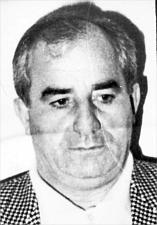
Mariano Agate was a member of the Sicilian Mafia. He was the boss of Mazara del Vallo Mafia family since the 1970s when he replaced the old boss Mariano Licari. He also was the boss of the mandamento of Mazara, including the Mafia families of Marsala, Salemi and Vita. Agate was a member of "Iside", one of the most powerful local Masonic lodges.

Francesco "Ciccio" Madonia was the Mafia boss of the San Lorenzo-Pallavicino area in Palermo. In 1978 he became a member of the Sicilian Mafia Commission.
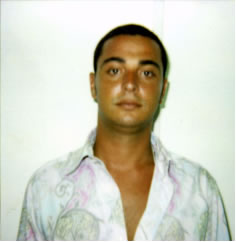
Giovanni "Gianni" Nicchi is a member of the Sicilian Mafia. Despite his young age – he is nicknamed 'u picciutteddu – he is considered to be one of the leading mafiosi of Cosa Nostra in Palermo. He was on the "most wanted list" of the Italian ministry of the Interior since 2006, until his arrest on 5 December 2009.
Pietro Tagliavia is a member of the Sicilian Mafia. Despite his young age, he is considered to be one of the upcoming leading Mafiosi of Cosa Nostra in Palermo.

Vito Roberto Palazzolo is an Italian businessman previously living in South Africa. Born in Terrasini, he moved to South Africa in the mid-1980s. He also goes by the name Robert von Palace Kolbatschenko. He is alleged to be a member of the Sicilian Mafia, an allegation he denies. In March 2009, the highest court in Italy confirmed a 2006 nine-year sentence for association with the Mafia. He is alleged to be a Mafia treasurer linked to Bernardo Provenzano, the Mafia boss arrested in April 2006 in Corleone, Sicily, and his predecessor Salvatore Riina, both serving life sentences in Italian jails. Palazzolo maintains his innocence and claims that he has been persecuted by the Italian government, the press, lawyers, politicians, and "opportunists" for many years. On March 30, 2012 Palazzolo was arrested by Interpol at Suvarnabhumi Airport in Bangkok, Thailand.
Raffaele Ganci was a member of the Mafia in Sicily from the Noce neighbourhood in Palermo. He was considered to be the right-hand man of Cosa Nostra boss Totò Riina and sat on the Sicilian Mafia Commission.
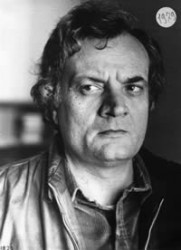
Bruno Contrada is the former police chief of Palermo and deputy director of the civil intelligence service SISDE who was arrested based on revelations of former Sicilian Mafiosi turned pentiti, Gaspare Mutolo and Giuseppe Marchese.

Salvatore Riina, called Totò, was an Italian mobster and chief of the Sicilian Mafia, known for a ruthless murder campaign that reached a peak in the early 1990s with the assassinations of Antimafia Commission prosecutors Giovanni Falcone and Paolo Borsellino, resulting in widespread public outcry and a major crackdown by the authorities. He was also known by the nicknames la belva and il capo dei capi.
The term State-Mafia Pact describes an alleged series of negotiations between important Italian government officials and Cosa Nostra members that began after the period of the 1992 and 1993 terror attacks by the Sicilian Mafia with the aim to reach a deal to stop the attacks; according to other sources and hypotheses, it began even earlier. In summary, the supposed cornerstone of the deal was an end to "the Massacre Season" in return for a reduction in the detention measures provided for Italy's Article 41-bis prison regime. 41-bis was the law by which the Antimafia pool led by Giovanni Falcone had condemned hundreds of mafia members to the "hard prison regime". The negotiation hypothesis has been the subject of long investigations, both by the courts and in the media. In 2021, the Court of Appeal of Palermo acquitted a close associate of former prime minister Silvio Berlusconi, while upholding the sentences of the mafia bosses. This ruling was confirmed by the Italian Supreme Court of Cassation in 2023.
Alfredo Cospito is an Italian anarchist. In his twenties, he refused conscription to military service and was convicted of desertion, then pardoned after going on hunger strike for one month. In 2012, he was sentenced to 10 years for kneecapping the head of the Italian nuclear power company Ansaldo Nucleare. Whilst imprisoned, he was convicted of the 2006 bombing of a Carabinieri barracks in which nobody was harmed. The Supreme Court of Cassation later increased the sentence to life without parole.
Nadia Desdemona Lioce is an imprisoned Italian member of the Red Brigades. Lioce was arrested in 2003 with Mario Galesi after a shootout on a train travelling between Rome and Florence and charged with several murders. At trial she admitted being a Brigadist and refused to speak more. She was sentenced to life imprisonment and placed in the restrictive 41-bis prison regime, which involves solitary confinement.
References
- ↑ Long Distance Proceedings Through Videoconference: The Italian Experience Archived June 11, 2007, at the Wayback Machine , Ministry of Justice (Italy) at the Tenth United Nations Congress on the Prevention of Crime and the Treatment of Offenders, Vienna, April 10–11, 2000
- ↑ "Response of the Italian Government to the report of the European Committee for the Prevention of Torture and Inhuman or Degrading Treatment or Punishment (CPT) on its visit to Italy". European Committee for the Prevention of Torture and Inhuman or Degrading Treatment or Punishment . Council of Europe. 20 April 2010. Retrieved 18 August 2011.
The responsibility to decide on complaints against the ministerial decree setting the 41bis regime has been given to the Supervisory Court in Rome, in order to avoid conflicting verdicts on this issue by the territorial Supervisory Courts being in the past entrusted to decide, depending on the territorial penitentiary at which the prisoner under 41 bis had been placed; the term to lodge a complaint has been extended from ten to twenty days, though such complaint does not suspend the execution of the relevant measure.
- 1 2 Strasbourg court jurisprudence and human rights in Italy: An overview of litigation, implementation and domestic reform Archived July 21, 2011, at the Wayback Machine , Juristras State of the Art Report by Marcello Flores, Anna Cesano & Sara Valentina Di Palma, University of Siena
- 1 2 3 Jamieson, The Antimafia, p. 45-46
- 1 2 Case of Enea v. Italy, Grand Chamber, European Court of Human Rights, 17 September 2009
- ↑ Concetto Vecchio (May 7, 2020). "Martelli: " Ho suggerito io a Bonafede il piano per riportare i boss in carcere, ma il mio decreto anti-mafiosi era un'altra cosa"" [Martelli: "I've suggested to [Alfonso] Bonafede to pur again the boss in prison, but my anti-mafia decree was another thing"]. La Repubblica (in Italian). Archived from the original on September 2, 2020.
- ↑ The Olive Tree of Peace: The massacre in via dei Georgofili Archived 14 August 2014 at the Wayback Machine , The Florentine, 24 May 2012)
- ↑ Amnesty International Report 2003 - Italy, Amnesty International, May 28, 2003
- 1 2 Italy condemned for tough jail conditions, ANSA, January 16, 2008
- 1 2 "Luigi Manconi: "Con 41 bis tanti diritti violati"". L'Espresso (in Italian). 5 November 2015. Retrieved 3 February 2023.
- ↑ Jailed Mafia bosses refuse food, BBC News, July 9, 2007
- 1 2 Mafiosi spread news of jail protest over law that stops them talking [ dead link ], The Independent, July 11, 2002
- ↑ Mafia strike leaves Italy cold, BBC News, July 16, 2002
- ↑ Suspected mob figure won't be returned to Italy, Los Angeles Times, October 15, 2007
- ↑ Fears of torture for Italian gangster Archived October 17, 2007, at the Wayback Machine , The Independent, October 17, 2007
- ↑ Press release [ permanent dead link ], European Court of Human Rights, November 27, 2007
- ↑ Press release Grand Chamber Judgment Enea v. Italy, European Convention on Human Rights, September 17, 2009 [ permanent dead link ]
- ↑ "Amnesty in fresh appeal for jailed anarchist head Cospito - English". ANSA. 24 January 2023. Retrieved 3 February 2023.
- ↑ "Alfredo Cospito: Hunger-striking Italian anarchist moved amid protests". BBC News. 31 January 2023. Retrieved 3 February 2023.
- ↑ "Anarchist Cospito appeal to high court set in 3 mts time". ANSA. 25 January 2023. Retrieved 3 February 2023.
- ↑ Castrillo, Pedro (30 November 2022). "Huelgas de hambre contra el régimen de aislamiento del preso anarquista Alfredo Cospito en Italia". El Salto. Retrieved 3 February 2023.
- ↑ "Italy on alert amid anarchist attacks on diplomatic missions". AP NEWS. 31 January 2023. Retrieved 3 February 2023.
- ↑ "La Corte di Cassazione ha anticipato al 24 febbraio l'udienza sul ricorso di Alfredo Cospito contro il 41-bis". Il Post (in Italian). 2 February 2023. Retrieved 3 February 2023.